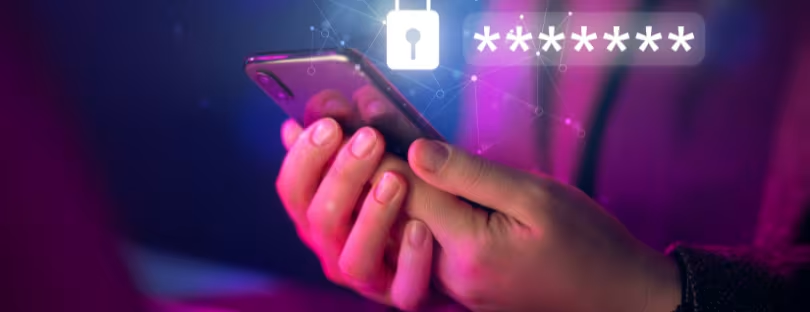
The Rise of Contactless Payments and What it Means for You
Contactless payments refer to transactions made using payment cards, smartphones, or other devices that use radio frequency identification (RFID) or near-field communication (NFC) technology. This allows the customer to simply tap or hold their device near a payment terminal to complete a transaction without having to insert a card or enter a PIN.
Contactless payment methods have been around since the early 2000s, beginning with RFID-enabled cards that could be tapped against readers. More recently, contactless payment options have expanded with the rise of mobile wallets like Apple Pay and Google Pay that allow payments using NFC-enabled smartphones.
The way contactIess payments work is that the payment card or device contains an embedded antenna that can transmit payment data over a short distance (usually within 4cm or less) to a reader using radio waves. This data is encrypted for security. The transaction is then completed in seconds without the customer having to swipe or insert a card. Contactless payments are typically only authorized for smaller amounts before requiring a PIN or signature for verification.
Benefits of Contactless Payments
Contactless payments offer several benefits that make them an attractive option for consumers and merchants alike:
Speed and Convenience
The main appeal of contactIess payments is their speed and convenience. Tapping a card or mobile device is much faster than inserting a chip card or swiping a magnetic stripe. This enables shorter checkout times and reduces queues in retail establishments. Contactless payments are also very convenient as you don’t need to carry cash or even take your wallet out.
Touchless Interaction
Contactless payments allow for touchless transactions. The customer simply needs to hold their card or device near the payment terminal without having to hand it over or touch buttons. This is especially beneficial in the current environment with increased awareness about hygiene and reducing the spread of germs.
Security Features
Contactless cards and devices have embedded chips that encrypt payment data for each transaction. This makes stealing data virtually impossible. Payments also require close physical proximity to the reader and have caps on transaction amounts as additional security measures.
Integration with Mobile Wallets
Contactless technology allows easy integration with mobile wallets on smartphones and wearables. This gives users the convenience of making payments directly through their devices. Features like tokenized cards enhance security as well. Leading mobile wallets like Apple Pay, Google Pay and Samsung Pay are increasingly supporting contactless payments.
Contactless Payment Methods
ContactIess payments allow you to pay quickly and securely without swiping or inserting your card. There are several contactless payment methods available:
Contactless Credit and Debit Cards
Many credit and debit cards now come with contactless technology built-in. These cards have a symbol on them that looks like a wi-fi logo turned sideways. You can tap your contactless card on a reader to make a payment under a certain limit, usually $50-$100. The payment is processed instantly without having to insert your chip or swipe. Contactless cards are very convenient for small, everyday purchases like coffee, groceries, and transit tickets.
Mobile Wallets
Mobile wallets like Apple Pay, Google Pay, and Samsung Pay allow you to store your credit and debit cards digitally on your phone. You can then hold your phone near a contactless reader to make a payment using NFC (near-field communication) technology. Mobile wallets offer the same speed and convenience as contactless cards. Many also have added security features like fingerprint or facial recognition. Mobile wallets are growing in popularity and acceptance.
Wearables
Some smartwatches and fitness trackers have contactless payment capabilities. Popular options are Apple Watch, Fitbit Pay, and Garmin Pay. You can link your cards to the wearable and tap to pay at checkout. Wearables offer a super convenient way to make hands-free payments. This method is still emerging but provides a glimpse into the future of contactless payments.
Contactless Payment Limits
Contactless payments typically have limits on the maximum amount that can be spent in a single transaction. These limits help enhance security and prevent fraudulent usage of contactless cards or devices.
The most common contactless payment limit is $100 per transaction. This allows consumers to easily pay for small, everyday purchases like groceries, coffee, transit rides, and more. Payments over $100 will require inserting the chip card or swiping and signing for the magnetic stripe card.
Retailers and card issuers establish lower limits to reduce financial risks. If a contactless card is lost or stolen, this restricts how much could potentially be spent by a fraudster. Incremental spending limits also encourage consumers to periodically authenticate with a PIN or signature for additional transactions.
Banks and card providers may allow customers to raise their contactless spending limits upon request. This gives greater convenience for those making larger yet legitimate purchases. Typically, the increase involves steps to verify identity and ensure the legitimate card owner is making the request.
In some countries, limits have increased over time as both consumers and issuers gain comfort with contactless security. Canada and the UK now allow limits as high as $250–$300 per transaction. The US may follow this trend as adoption spreads.
Ultimately, contactless limits aim to strike the right balance between enhanced speed and convenience and critical security protections. Higher limits provide flexibility for customers while remaining prudent to avoid potential financial risks or unauthorized spending.
Contactless Payment Security
ContactIess payments utilize advanced security measures to protect against fraud and data breaches. Here are some of the key security features:
Tokenization
-
Tokenization replaces sensitive card details with randomly generated numbers, or tokens, during transactions. The token has no value if stolen since it cannot be used to make purchases.
-
The token is shared with the merchant rather than the actual card number, providing an extra layer of security.
-
The tokens are stored in a secure vault by the card issuer. The real card details are only available to the issuing bank.
Encryption
-
Contactless payments use short-range wireless technology like NFC to transmit payment data. All data shared is encrypted.
-
The latest standards, like EMVCo, provide end-to-end encryption of transactions from the card to the terminal.
-
This prevents data from being intercepted and stolen during contactless payments.
Other Security Features
-
Contactless cards and mobile wallets have built-in fraud monitoring that detects unusual activity.
-
Transactions require close physical proximity between the card and terminal, reducing risks.
-
Transactions above a certain limit require additional authentication, like a PIN or biometrics, for extra security.
-
Lost or stolen contactless cards can be instantly disabled, just like traditional cards.
So in summary, contactless payments utilize multilayered encryption, tokenization, fraud monitoring, and authentication to provide advanced security for users. Consumers can be assured that contactless transactions are secure.
Contactless Payment Adoption
Contactless payments have seen rapid growth and adoption around the world in recent years. According to research, global contactless card payments grew by 41% in 2020 to reach over $1 trillion in transaction value.
The regions with the highest usage of contactless payments are Europe and Asia Pacific. In Europe, over 70% of face-to-face transactions use contactless payments. The UK leads, with over 90% of payments being contactless. In Asia Pacific, Australia has over 80% contactless transactions, while adoption rates in China, South Korea, and India are rising quickly.
In the US, contactless payments have lagged behind but are now growing at an accelerated pace. Over 80% of POS terminals accepted contactless payments. Analysts predict that over 50% of face-to-face card transactions in the US will be contactless by 2024.
Contactless payments are popular across age groups but are most widely used by millennials and Gen Z who prefer speed and convenience. Mobile contactless payments are driving further adoption among younger consumers.
The global contactless payment market is projected to grow at a CAGR of 20% from 2022–2030 as more consumers transition away from cash. Trends like self-service commerce, unattended retail, and transit are expected to further accelerate the use of contactless payments worldwide.
Contactless Payment Locations
Contactless payments are accepted at a wide variety of locations, making it easier and more convenient for consumers to pay without cash. Some of the most common places that accept contactless payments include:
Retail Stores
Many major retail chains accept contactless payments, including grocery stores, big-box retailers, clothing stores, convenience stores, and more. Most stores that accept credit cards now also take contactless payments through services like Apple Pay, Google Pay, and tap-enabled credit cards. Consumers can quickly and easily pay by tapping their phone or card at checkout instead of swiping or inserting their card.
Vending Machines
Vending machines are increasingly introducing contactless payment capabilities. Rather than fumbling with coins or bills, customers can simply tap their phone or contactless card on the payment terminal to make a purchase. This creates a faster, simpler buying experience. Contactless payments are especially convenient for quick purchases from vending machines selling snacks, beverages, and other low-cost items.
Transit Systems
Many public transportation services enable riders to tap contactless cards or mobile devices when entering and exiting the system. This includes transit systems like subways, buses, light rail, ferries, and more. Contactless payments provide faster entry, reducing long lines at busy stations during rush hour. Riders can easily reload their transit cards online or automatically pay per trip right from their phone. Popular examples include Oyster in London, Octopus in Hong Kong, and OMNY in New York City.
Future of Contactless Payments
Contactless payments are expected to continue growing in popularity and overcoming prior limitations. Here are some key areas of expected growth and innovation:
Increased Limits
Transaction limits for contactless payments have been steadily increasing. Where limits were once €25–50 per transaction, major card issuers have now increased limits to €100 or more. Higher limits allow consumers to use contactless for larger purchases without needing to insert a chip or swipe. This added convenience may further drive adoption.
More Wearables Integration
Smartwatches, rings, and other wearable devices will likely see further integration with contactless payments. Wearable payments provide added security, as the payment device never leaves the user’s wrist or finger. Payments can also be made quickly with a simple tap or gesture. As wearables gain capabilities for contactless payments, usage rates may climb.
Role in a Cashless Society
Some technologists envision a future cashless society where paper money is phased out in favor of digital payments. If this comes to pass, contactless payments would likely play a key role, allowing for quick and convenient small transactions without cash. Countries like China and Sweden are already moving rapidly toward cashless economies.
Overall, contactless payments are poised for robust growth and a potentially seminal role in future commerce and payments. With innovations in technology and infrastructure, paying without contact may someday become the norm worldwide.
Implementing Contactless Payments
For businesses
To implement contactless payments, businesses need to invest in contactless-enabled point-of-sale (POS) systems and payment terminals. Most modern POS systems support contactless payments already. The main ways a business can accept contactless payments are:
-
Contactless credit/debit cards – The business needs contactless card readers to accept tap-and-go style payments. Most businesses accept major card network brands like Visa, Mastercard, and American Express that offer contactless cards.
-
Mobile wallets – Smartphone apps like Apple Pay, Google Pay and Samsung Pay allow customers to pay by tapping their mobile devices. Businesses need NFC-enabled terminals to accept mobile wallet payments.
-
Contactless wearables – Wearables with payment capability, like smartwatches and fitness bands, can also make contactIess payments. The business needs compatible NFC terminals.
To advertise contactless payment acceptance, businesses can display stickers/signage at checkout areas. Staff should be trained on processing contactless transactions to assist customers.
For consumers
Consumers first need a contactless payment instrument; this could be a contactless debit/credit card, mobile wallet app, or wearable device. Contactless cards are automatically sent by issuers now, along with new and replacement cards. Mobile wallets need to be setup on smartphones and wearables paired with them.
To pay contactless, consumers simply need to tap or hold their payment device to the contactless reader when prompted during checkout. For low-value transactions, signatures or PINs are often not required. Consumers should monitor transaction receipts and statements as usual.
Contactless payments offer consumers convenience and speed. With more stores accepting contactless payments, consumers find it easier to pay with a simple tap. Mobile wallets and wearables add further convenience. Consumers should, however, be aware of payment limits and security considerations, like not losing their contactless card or device.
Conclusion
ContactIess payments have become an increasingly popular payment method over the past few years, and for good reason. As summarized in this article, contactless payments offer a number of benefits to both consumers and merchants.
For consumers, contactless payments are quick, convenient, and seamless. Tapping a card or mobile device is much faster than inserting a chip card or swiping a magnetic stripe. Contactless payments also enable customers to checkout faster, reducing wait times.
Additionally, contactIess payments are secure. They utilize tokenization, encryption, and other measures to protect card data. Limits on contactless transactions also help minimize fraud exposure. Many contactless cards and devices also require user authentication, like a PIN or biometrics, for added security.
For merchants, contactless payments mean faster transactions, shorter queues, and improved customer satisfaction. Enabling contactless payments also positions merchants to accept the latest payment methods as consumer adoption increases.
As more stores, venues, public transit systems, and other businesses adopt contactless payments, consumer exposure and usage continues to grow. Contactless transactions are expected to steadily rise in the coming years. The technology will also continue to advance to make payments even more seamless.
In summary, contactIess payments provide a better customer experience while maintaining security. With their clear benefits and increasing adoption, contactIess payments are poised to become the predominant payment method of the future. Both businesses and consumers can greatly benefit from embracing contactIess payments.









